Collectable Morris Minor LCV van and pick-up models
Posted by Chris Graham on 7th June 2024
Mike Neale concludes this look at Morris Minor LCV van and pick-up models by assessing the offerings from Oxford Diecast, Saico and Trax.
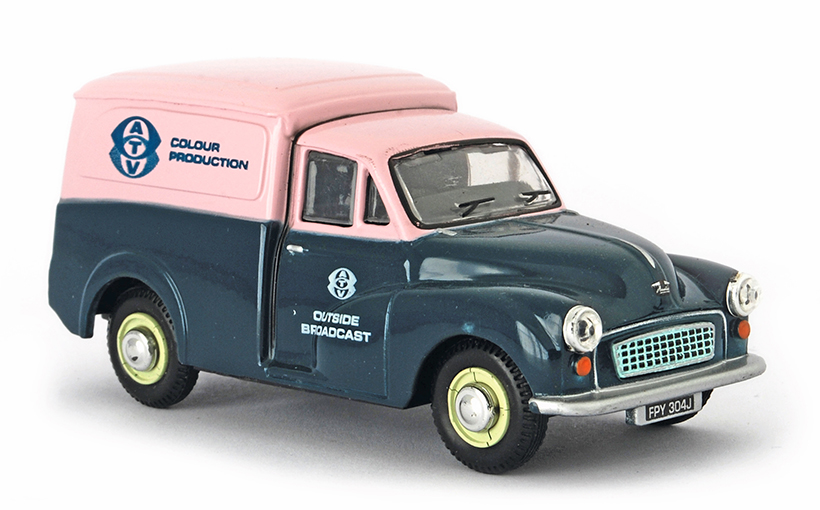
ATV liveried Austin van from Oxford.
So far, I’ve looked at specialist hand-built models of the Minor van and pick-up, as well as mass-produced models from Corgi and Lledo. In this concluding feature, I’ll review those made by other manufacturers.
Oxford Diecast
Lyndon Davies of Oxford Diecast had worked at Mettoy producing Corgi Toys in the late 1970s and early ’80s, subsequently returning to the new Corgi business in 1986. He has had various degrees of involvement with Corgi on and off ever since and is now CEO of Hornby Hobbies, which owns Corgi.
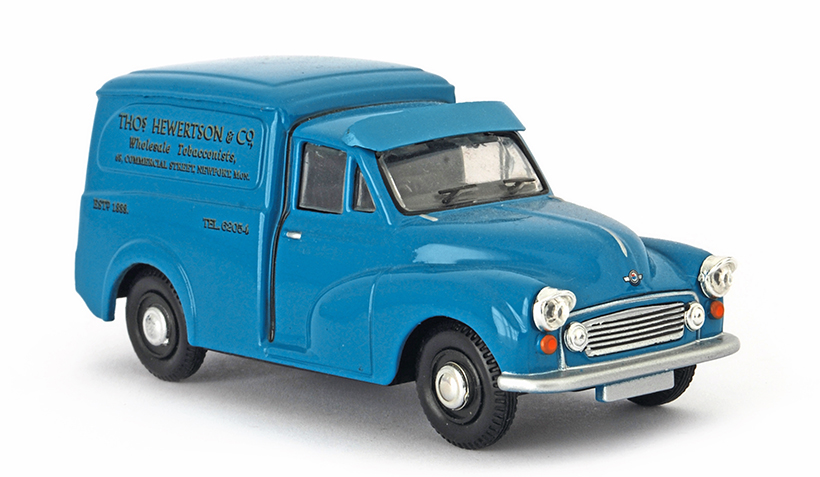
Oxford model of Hewertson’s Morris van, as owned by Russ Harvey.
Independently of Corgi, though, in 2007, he decided to introduce a series of diecast Morris Minor van models in 1/43 scale. Not just the standard van, either – various, more unusual body types were produced, as well as Austin-badged vans with the crinkly grille. These were made in China. The body shape was good, although the radiator grille let it down a bit, the shape and fit seeming better on some than others. Windscreen wipers were moulded into the glazing unit and picked out in black. The coloured plastic wheels were fitted with plain chrome hubcaps. Bonus points to Oxford for not fitting saloon car chrome bumpers or overriders, although the silver paint they applied usually extended across the whole bumper valance rather than just the bumper blade on the real van.
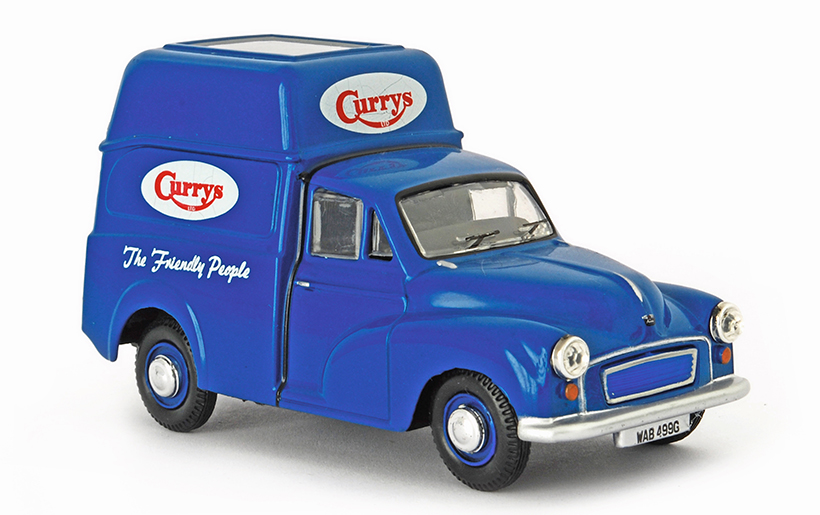
Oxford’s version of the high-top Currys van.
Examples of standard bodied Austin versions included MM012 in turquoise and white Co-Op livery, 2000 being made. MM022 was in lilac and dark blue ATV Colour Production, again 2000 were produced. I can just hear their jingle when I see that logo. MM016 was in the early AA livery, whilst MM027 was in the new AA livery introduced in the late 1960s, with 2000 made.
MM023 was a Morris van with a sunvisor above the windscreen in blue Hewertson Tobacconists livery, a run of 2000. The real van is owned by Morris LCV expert, author and CVC writer Russ Harvey, and is currently undergoing restoration.
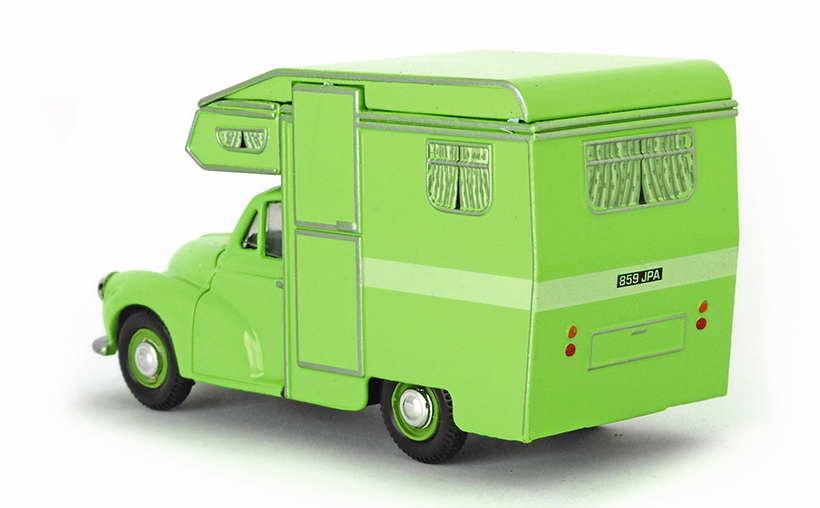
A bright green Morris Minor Camper by Oxford Diecast.
Oxford’s Morris Minor high-top van MM031 in blue Currys livery, similar to the Corgi Vanguards model, had the registration WAB 499G of a preserved van in this livery. The real vans were specially built for Currys by Marshall’s of Cambridge to carry tall upright fridge freezers which needed to be transported the right way up. Kit versions of this glass fibre conversion were later offered through BMC dealers, some being used by laundry companies. They had a translucent centre roof panel. Other liveries were also issued by Oxford.
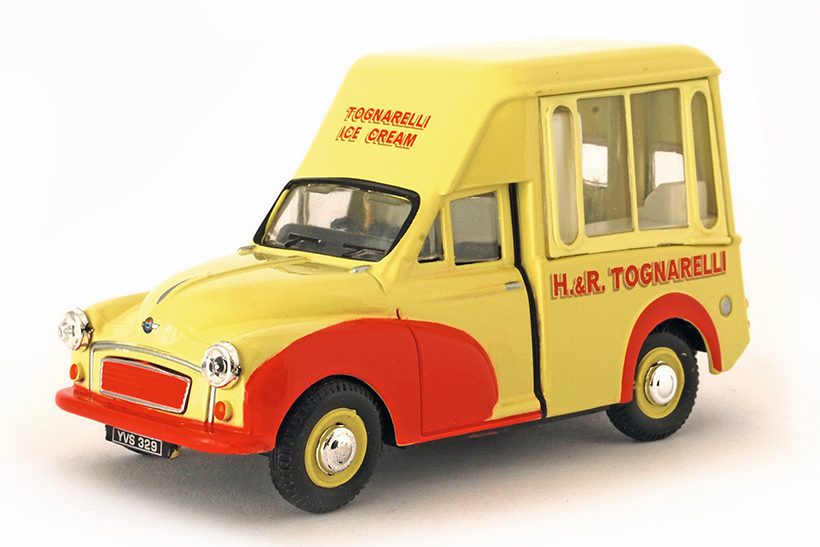
The real Tognarelli ice cream van survives in preservation.
A more unusual body was the Morris Minor Camper Van, which must have been somewhat slow and unstable. Model MM032 was in bright green, and a blue version was also issued.
A nice choice was Morris Minor ice cream van, MM047, in cream and red Tognarelli livery, 2000 being produced. This was a model of a real preserved vehicle with this body style, with age-related registration YVS 329. Tognarelli were based in Workington.
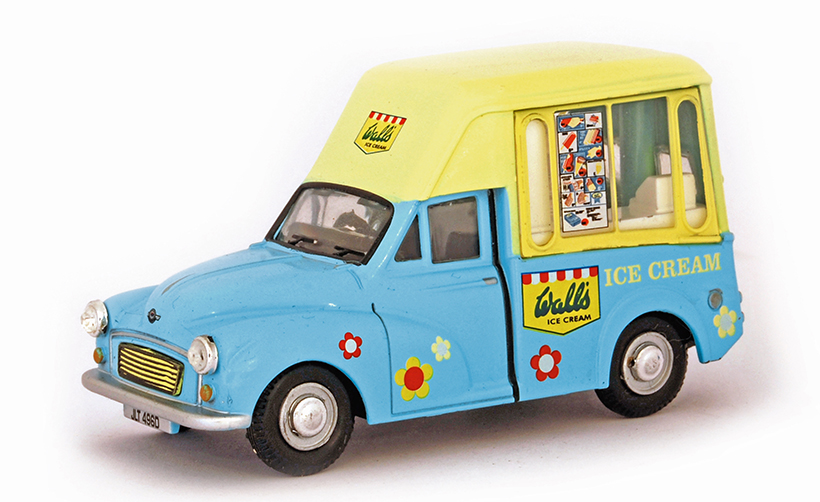
Walls ice cream livery on Oxford’s ice cream van.
Oxford’s Walls ice cream van, MM033 (3,000 produced) used the same body as the Tognarelli model, and had registration JLT 496D. That was originally a Post Office Telephones Utility but by the mid-1970s it had been converted into a high-top ice cream van used in Norwich, although the rear body was of a slightly taller and more angular design than the Tognarelli van and thus the model. It would have been unreasonable to have expected Oxford to tool up to produce a subtly different body, though, just to satisfy the tiny handful of people like me who have seen a photo of the real one! Other liveries of the ice cream van were also issued by Oxford, including Lyons Maid and Tonibell in both blue and pink.

Home & Colonial Stores Morris gown van by Oxford.
The next body style was a Gown van, as produced by Hawson-Garner of Andover, amongst others, with an aluminium clad timber framed body. These were fairly common in the 1960s, particularly in London, used mostly by tailoring firms, but survivors are rare. Several liveries were issued, two-tone grey MM034 Tibbett & Britten being modelled on a real, preserved vehicle, NGH97D. MM038 was a black Burton’s Tailors van, MM039 was in maroon and black Home & Colonial livery, MM040 a very dark blue John Collier Tailors van, and MM041 in dark green and black Alexandre Tailors colours. Some of the gown van models seemed to sit a bit low on their axles – perhaps they were heavily laden with the latest groovy fashions.
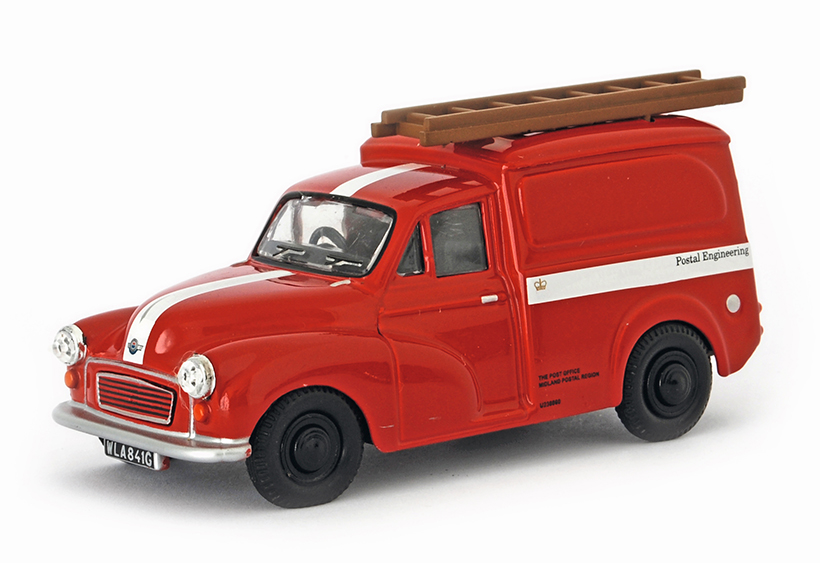
Postal Engineering van by Oxford.
Oxford also issued several GPO Minors – red mailvans, a red & white postal engineering van and telephones utilities in both green and yellow. MM053 was a model of Coventry Transport Museum’s Royal Mail Van, with 2000 produced.
Saico
These 1/26 scale Morris Minors, with pull-back motors, really fall more into the toy category, although they have a certain charm. Saico made the saloon, convertible and traveller as well as the van and pickup, all with opening doors which are standardised across the range, so, you’ve guessed it – they were the 2-door saloon type doors and so too long for the LCVs. The grille and the headlights looked a bit too small, and of course car type bumpers and overriders were fitted.
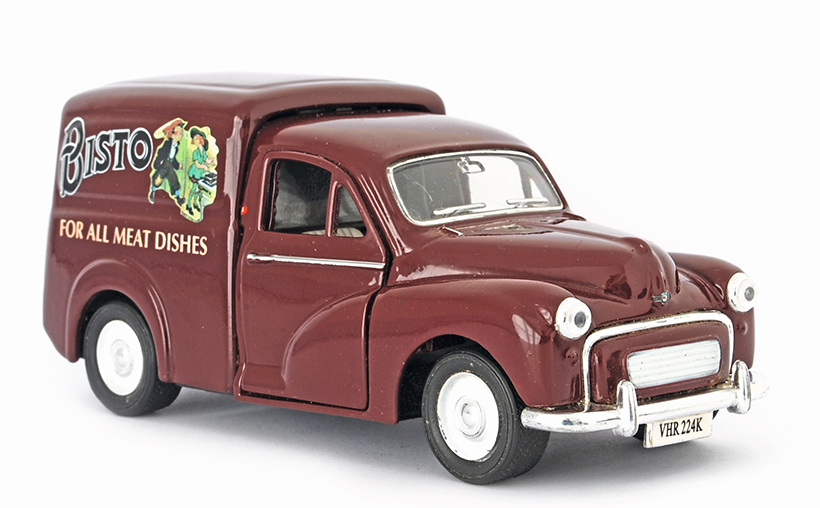
Saico Morris Minor Bisto van.
Amongst many van liveries were Bisto in maroon and Post Office Telephones in yellow. The pick-up appeared in blue and other colours.

Saico’s version of a Walls Ice Cream van.
Saico also produced a Walls ice cream van, shall we say “inspired by” the Oxford version, and did their version of the Morris Motors Fire Brigade pickup, again just the standard Minor 1000 with enclosed cab.
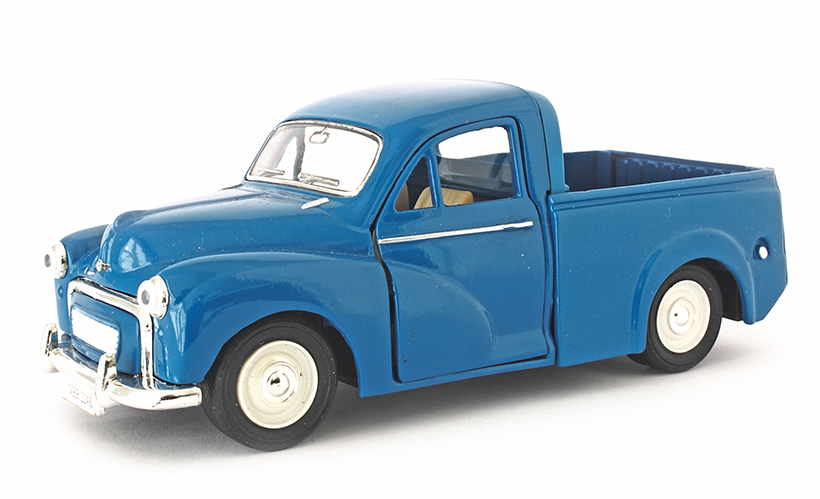
Saico pick-up in blue.
Trax
Trax Models, also going under the name Top Gear Models, of Australia specialise in producing 1/43 scale models of cars and vans that were once everyday sights down under. Older Trax models were diecast, but recent limited-edition runs have been in resin. As well as Holdens and Australian Fords, the Morris Minor Ute (pickup) was issued, in blue or light grey. The finish and detail was good, with photoetched wipers, separate door handles, realistic headlights and a very crisp representation of the grille. However, dare I say it, the doors, particularly the windows, looked a little too long, and, at the risk of sounding like a stuck record, chrome car type bumpers with overriders were fitted.

Morris Minor Ute by Trax Models.
I’ve only been able to cover here a handful of the many variants of Morris LCV models produced, despite running to three parts. There are so many liveries that I could probably write a whole book on them. Maybe one day I should!
This feature comes from the latest issue of Classic & Vintage Commercials, and you can get a money-saving subscription to this magazine simply by clicking HERE
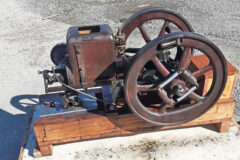
Previous Post
Restoring a Nelson Brothers stationary engine
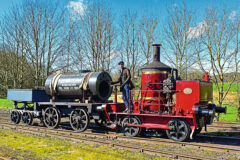
Next Post
Full report from the brilliant Beamish Steam Gala



